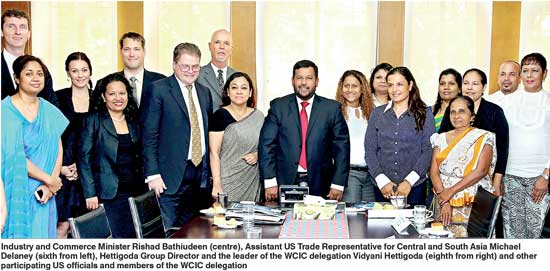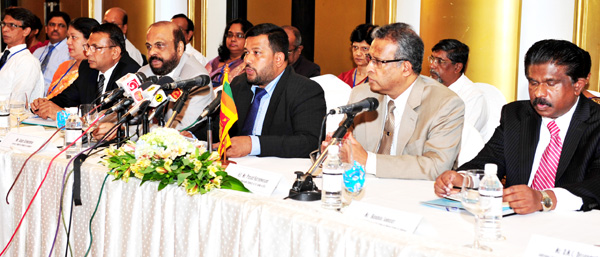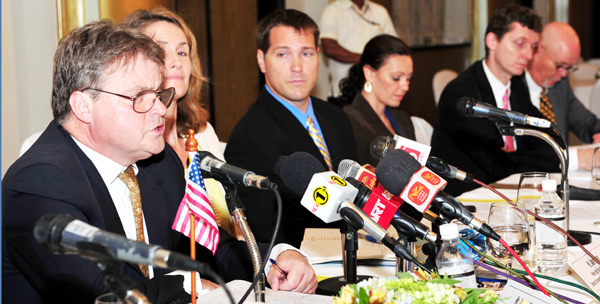

Following the Lanka-US trade talks and business forums in Colombo last week, the ongoing bilateral engagement between the two countries received yet another boost on 17 October as the US trade emissary for South Asia called for the establishment of the first SL-US Business Council in Colombo. 
“As far I know there is no SL-US Business Chamber. Frankly, there should be,” Assistant US Trade Representative for Central and South Asia, Michael Delaney said in Colombo.
The Women’s Chamber of Industry and Commerce (WCIC), which commenced in 1985 and has a current membership of 120, is a Lankan non-profit group consisting of female professional. WCIC is the first trade chamber exclusively for women to be set up in the country. It promotes the special interests of businesswomen and helps them get into the mainstream of Lankan business.

Leader of the delegation and Hettigoda Group Director Vidyani Hettigoda said: “This chamber promotes all women’s enterprises, even women from the rural sector, and attempts to educate them with special programs of empowerment. We can facilitate education for them as per President Mahinda Rajapaksa’s vision and provide them with training.
“We, the women’s businesses of Sri Lanka, like to partner with the US economy. However, we found that introducing our products to the US market was not easy with many barriers to overcome. Products such as Lankan Ayurvedics are not familiar to the US market. For example, I cannot take ayurvedic oils produced by my firm to the US since I have to reveal the formulations. But these are not herbs; these are products of the Ayurveda tradition which has a 3,000-year long history. There are many issues like this when Lankan businesses link with the US market.”
“You all are presumably small businesses and like to access the US market. We have similar business chambers in the US and we can facilitate you to meet them,” Delaney said to the WCIC. He added: “Some research needs to be done on this; that is my thinking. I had conversations with Indians in the US over their Ayurvedic products. Their main concern is the Intellectual Property (IP). On the other hand, the registration process for a vitamin supplement is less comprehensive. There is a lack of IP in this area and I do not have a position with regard to this. What is clear is that addressing these can improve business and trade for both countries.”
In 2013, the US-Sri Lanka economic relations (both trade and investment) stood at $ 3 billion. Bilateral trade between the two countries increased by 21% to $ 2.8 b in 2013, compared to 2012; the US is the largest buyer of Sri Lankan products, absorbing 23% of total annual exports, of which 73% consists of high-end apparels.
Other members from the WCIC delegation noted: “We want to have a representative in the US. If we have link with US women’s chambers, it’s easier. We visited Washington, and there are other chambers such as the Indian Chamber but no US-Sri Lanka Chamber.”
Bathiudeen, addressing the in-depth discussion, said: “I thank Delaney for his important suggestions today at this crucial session. As I am given to understand, the WCIC Chamber members here today are representing important sectors such as gems and jewellery, organic farming, Ceylon Tea, handicrafts and batiks, garments and service outsourcing. Therefore I have no doubts that this is a great opening for the Lankan women businesses, including all SMEs, to enter the US market.”
As global demographics shift in favour of women, they are increasingly becoming an important market, as well as business owners and employers. In the period of 2001-2012, Sri Lanka’s female population grew by 11% to 10.46 million. Reportedly, about 10% of Lankan employers are women. In 2013, Lankan female labour force participation stood at 28%.
According to the International Labour Organisation (ILO) and Asian Development Bank (ADB), women’s entrepreneurship is especially significant in the context of Sri Lanka becoming an ‘Upper Middle Income’ country as female operated businesses – especially SMEs – could cater well to the demands of the rising middle class.




